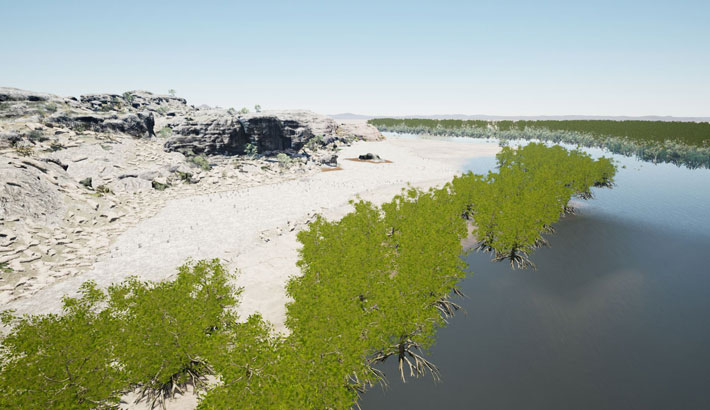 ADELAIDE, AUSTRALIA—According to a statement released by Flinders University, a new survey of the Red Lily Lagoon area in Northern Australia’s West Arnhem Land with electric resistivity tomography (ERT) has revealed that some 8,000 years ago, the ocean’s coastline stretched across what is now an inland region. The area is known for Madjedbebe, a 60,000-year-old archaeological site, and its distinctive ancient rock art. Environmental changes at the lagoon are reflected in this rock art, with the appearance of images of freshwater species of fish, birds, and crocodiles in areas that had once been near the ocean and mangrove swamps, explained team member Jarrad Knowlessar. Such environmental changes are also reflected in the types of stone artifacts that were made, and the sorts of foods that were eaten, he added. The new environmental model produced by the survey will also help researchers to identify areas where additional archaeological sites could be found. Read the original scholarly article about this research in PLOS ONE. To read more about how Aboriginal artists depicted climate change in the rock art of West Arnhem Land, go to "Letter from Australia: Where the World Was Born."
ADELAIDE, AUSTRALIA—According to a statement released by Flinders University, a new survey of the Red Lily Lagoon area in Northern Australia’s West Arnhem Land with electric resistivity tomography (ERT) has revealed that some 8,000 years ago, the ocean’s coastline stretched across what is now an inland region. The area is known for Madjedbebe, a 60,000-year-old archaeological site, and its distinctive ancient rock art. Environmental changes at the lagoon are reflected in this rock art, with the appearance of images of freshwater species of fish, birds, and crocodiles in areas that had once been near the ocean and mangrove swamps, explained team member Jarrad Knowlessar. Such environmental changes are also reflected in the types of stone artifacts that were made, and the sorts of foods that were eaten, he added. The new environmental model produced by the survey will also help researchers to identify areas where additional archaeological sites could be found. Read the original scholarly article about this research in PLOS ONE. To read more about how Aboriginal artists depicted climate change in the rock art of West Arnhem Land, go to "Letter from Australia: Where the World Was Born."
Subsurface Imaging Reveals Australia’s Ancient Landscape
